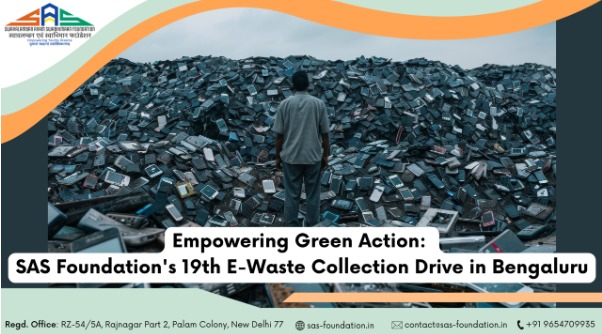E-Waste and the Environment: Understanding the Hidden Impact and Embracing Sustainable Solutions
In today’s digital age, where technology evolves faster than ever, our dependence on electronic devices is undeniable. From smartphones and laptops to home appliances and medical equipment, electronics have transformed how we live, work, and communicate. However, this digital revolution comes at a cost—a rapidly growing mountain of electronic waste, or e-waste.
According to the Global E-Waste Monitor, over 53.6 million metric tonnes of e-waste were generated in 2019 alone, and this number is expected to exceed 74 million tonnes by 2030. The implications of this surge are far-reaching, particularly when e-waste is improperly disposed of or inadequately recycled. This article sheds light on the environmental and public health consequences of e-waste and highlights actionable solutions for a more sustainable future.
The Environmental Cost of E-Waste
E-waste contains a complex mix of materials, many of which are hazardous to ecosystems and human health. Components like lead, mercury, cadmium, and flame retardants pose serious environmental threats when not handled responsibly.
- Soil and Water Contamination
- When e-waste is dumped into landfills or left in open spaces, heavy metals and toxic substances seep into the soil and groundwater.
- Lead and cadmium, commonly found in batteries and circuit boards, can persist in the environment for decades, affecting agricultural productivity and drinking water supplies.
- Air Pollution
- In many developing countries, informal e-waste recyclers burn electronic components to recover metals like copper.
- This open-air burning releases dangerous pollutants, including dioxins, furans, and particulate matter, into the atmosphere, degrading air quality and contributing to respiratory illnesses.
- Biodiversity Loss
- Contaminated water sources and toxic soil disrupt local flora and fauna.
- Aquatic life suffers when heavy metals accumulate in rivers and oceans, leading to ecological imbalances and bioaccumulation in the food chain.
Public Health Risks
Communities near informal e-waste dumping grounds are particularly vulnerable. Often, these sites are located in low-income or marginalized areas, where awareness and regulation may be lacking.
- Health Impacts on Workers and Residents
- Exposure to mercury, lead, and brominated flame retardants has been linked to neurological disorders, reproductive issues, and developmental delays in children.
- Informal recyclers, including children, often work without protective gear, directly handling broken devices and inhaling toxic fumes.
- Mental and Physical Fatigue
- Long-term exposure to toxins in poorly managed e-waste centers can lead to fatigue, memory loss, and even damage to internal organs.
Why Current Recycling Methods Fall Short
Globally, only 17.4% of e-waste is collected and recycled formally, leaving the majority to be handled by informal sectors or discarded improperly. Key challenges include:
- Lack of Infrastructure
Many regions lack formal collection centers or recycling plants equipped to handle complex e-waste streams. - Consumer Behavior
Awareness about the need to recycle electronics is still low. Many people store old devices at home or discard them in regular trash. - Producer Responsibility
Not all electronics manufacturers take adequate responsibility for the end-of-life disposal of their products. While Extended Producer Responsibility (EPR) laws exist in many countries, enforcement remains inconsistent.










